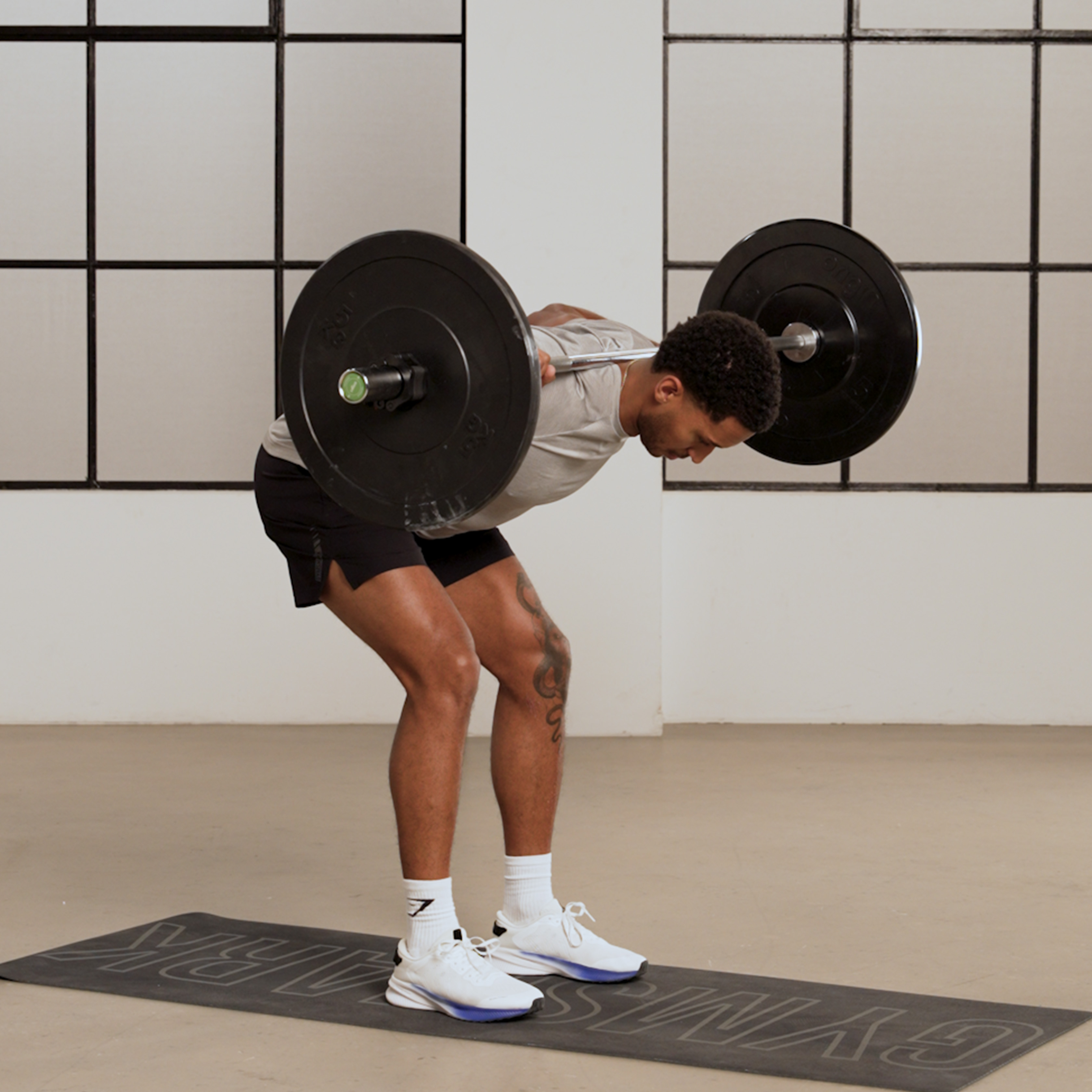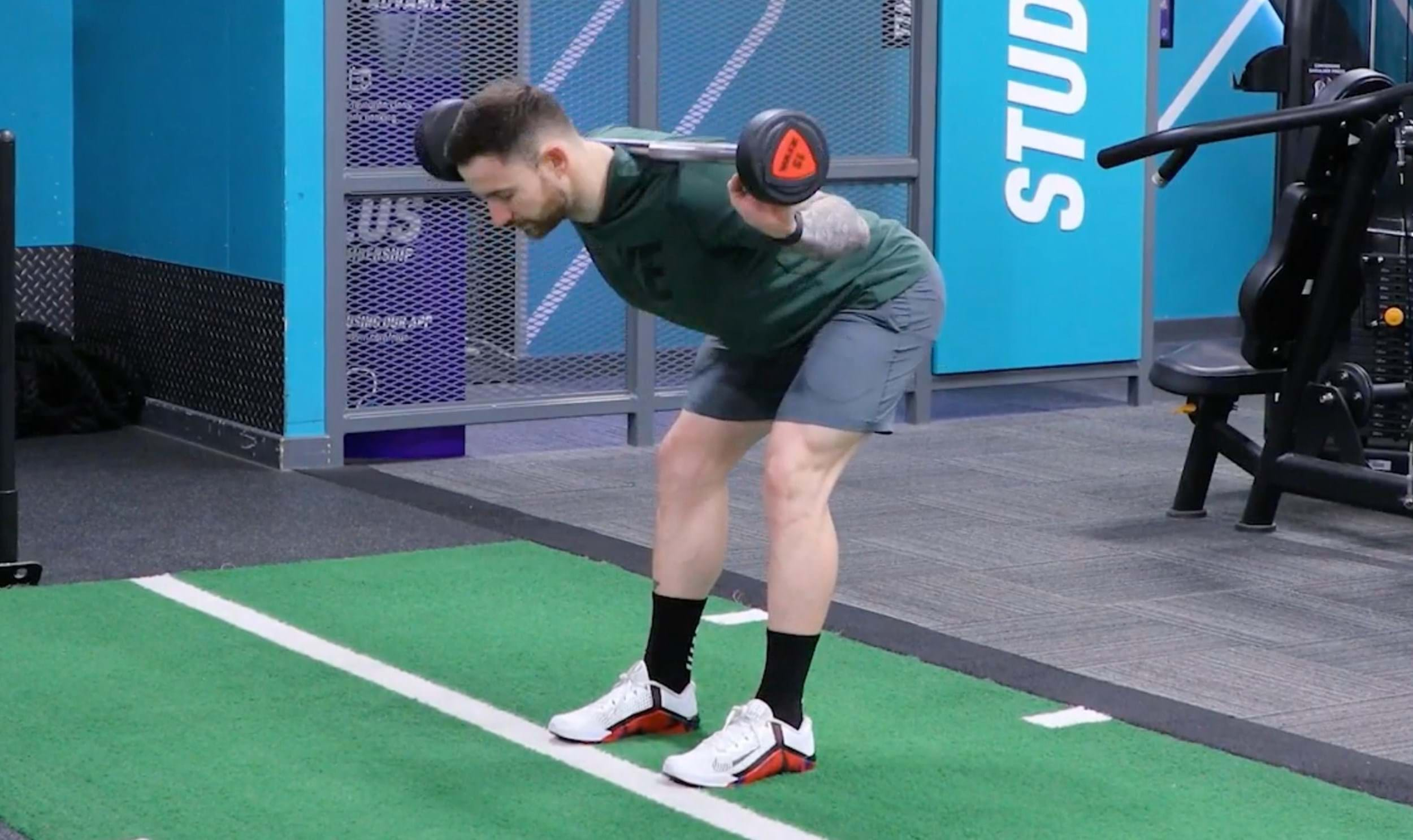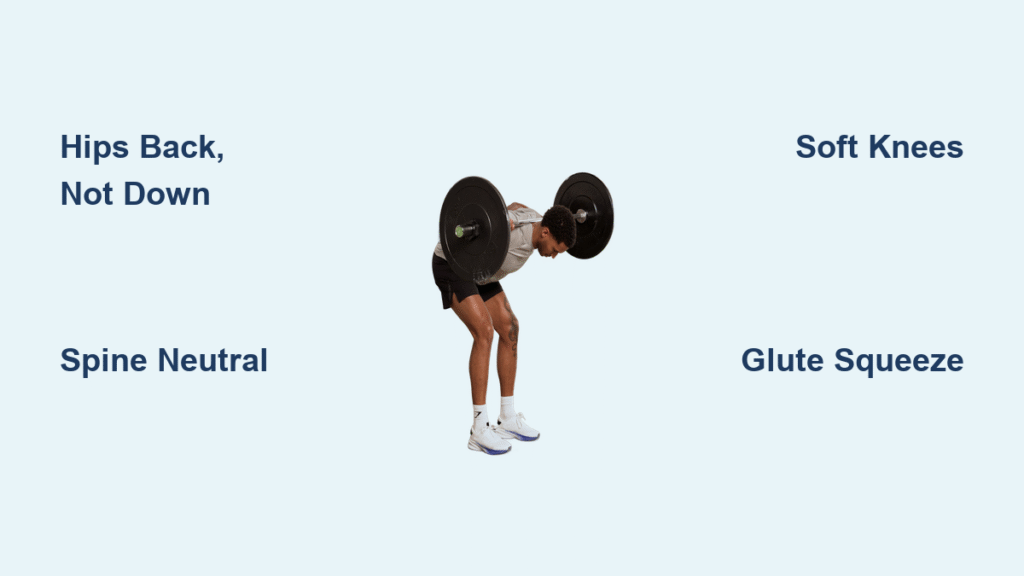Most lifters either skip the barbell good morning exercise entirely or perform it with dangerous spinal rounding that invites injury. Yet when executed correctly, this hip-hinge powerhouse delivers unmatched hamstring and glute activation—adding 7.5% to deadlift strength in just six weeks according to powerlifting research. The truth? Your posterior chain is starving for this movement’s unique eccentric hamstring loading and spinal stability demands. Stop fearing the barbell good morning exercise and start mastering the exact setup cues, mistake fixes, and progression tactics that transform it from a liability into your most valuable strength builder.
Why Your Hamstrings and Glutes Dominate the Barbell Good Morning

Your semitendinosus and biceps femoris muscles work overtime as you hinge forward, lengthening under heavy tension during descent before explosively contracting to return upright. This eccentric-concentric cycle creates 20% greater hamstring activation than unloaded hip hinges at 50%+ of your max load. Meanwhile, your gluteus maximus fires hardest near lockout—delivering that final hip snap to complete each rep.
Spinal Stabilizers Prevent Catastrophic Shear Forces
The barbell’s forward position creates dangerous leverage on your lumbar spine. Your erector spinae group battles this by maintaining rigid spinal neutrality, while your transverse abdominis and obliques generate life-saving intra-abdominal pressure. Critical detail: Upper-back retractors like your mid-traps must actively pin the bar into your upper-trap shelf. If your shoulder blades relax, the bar rolls up your neck—immediately compromising thoracic stability.
Joint-Specific Execution Cues
- Hips: Drive straight backward (not down) as if closing a car door with your glutes
- Knees: Maintain a soft 10–20° bend to keep tension off quads
- Ankles: Distribute weight evenly across your big toe, little toe, and heel tripod
Set Up Your Barbell Good Morning to Avoid Spinal Shear

Rack height and bar placement make or fail your safety. Set the bar just below shoulder level so you can unrack by straightening your legs—not rising onto your toes. Place the bar across your upper-trap ridge (high-bar position) for most lifters. If shoulder mobility limits you, drop it 3–5 cm lower (low-bar) to shorten the lever arm pulling your spine forward.
Hand and Foot Position Fixes Common Failures
Grab the bar with an overhand grip just outside shoulder width. Use a thumbless “false” grip if wrist pain occurs—it reduces elbow strain by 30% according to EMG studies. Step back 2–3 steps with feet hip-width apart, toes angled 15–30° outward only if hip mobility allows. Now the critical step: Brace your core like you’re about to take a punch. Inhale deeply into your diaphragm, lock ribs down, and squeeze glutes to create 360° abdominal pressure before moving.
Step-by-Step: Perform the Barbell Good Morning with Perfect Form
Controlled Descent Under Maximum Tension
Initiate movement by pushing hips straight back while keeping your spine rigid. Fix your gaze 1–2 meters ahead on the floor—never look up. Descend only until your torso hits 45–90° from vertical or until your pelvis begins to tuck under (film yourself to spot this). The weight should shift toward your heels while maintaining full-foot contact.
Explosive Ascent Without Lumbar Hyperextension
Drive hips forward while exhaling hard through the sticking point. Squeeze glutes at lockout—not your lower back. Hyperextending at the top (a common ego-lifting mistake) spikes disc compression by 40%. Maintain the bar’s vertical path over your mid-foot throughout; any forward drift means you’ve lost spinal neutrality.
Breathing Pattern That Prevents Injury
Use the Valsalva maneuver: Take a diaphragmatic breath at the top, hold it while descending, then forcefully exhale during ascent. Skipping this reduces intra-abdominal pressure by 50%—dramatically increasing shear forces on lumbar discs.
Program Barbell Good Mornings for Strength or Hypertrophy
Load Smart Based on Your Level
- Beginners (Weeks 1–4): Empty 20kg bar, 3 sets of 8–10 slow reps to master the hinge
- Strength Block: 70–85% 1RM, 3–5 sets of 3–5 reps with 3-minute rests
- Hypertrophy Phase: 60–75% 1RM, 3–4 sets of 8–12 reps with 90-second rests
Frequency and Pairing Rules
Limit barbell good morning exercise to 1–2 sessions weekly. Pair it with quad-dominant lifts like hack squats—not heavy Romanian deadlifts—to avoid posterior-chain burnout. Never stack it after heavy squats; your spinal erectors need 72 hours to recover from high-shear movements.
Fix These 5 Common Barbell Good Morning Mistakes Immediately

| Mistake | Instant Correction |
|---|---|
| Rounded lower back | Drop 20% load + practice wall hip-hinge drills (touch wall with hips while keeping spine neutral) |
| Locked knees | Cue “soft knees” + imagine sitting back into a chair |
| Over-reaching depth | Stop descent when pelvis tucks—film side-view videos monthly |
| Hyperextension at lockout | Finish with glute squeeze, not lumbar arch |
| Bar sliding up neck | Pull bar down into traps + slightly tuck chin |
Who Should Skip the Barbell Good Morning (And Safer Alternatives)
Avoid this exercise if you have acute disc herniation, spondylolisthesis, or recent hamstring tears. Instead, try these spine-sparing alternatives:
Banded Good Morning for Warm-Ups
Loop a heavy resistance band under your feet and over your traps. Perform 2 sets of 20 reps with light tension to prime spinal erectors before lifting. The accommodating resistance reduces shear forces while teaching proper hip hinge mechanics.
Seated Good Morning for Lumbar Isolation
Sit on a bench with feet flat, bar on upper back. Hinge forward 20–30° to target erector spinae without hamstring strain. Ideal for lifters with desk-job posture to combat anterior pelvic tilt.
Top 3 Barbell Good Morning Variations for Your Goals
Wide-Stance for Glute and Adductor Dominance
Place feet 1.5x shoulder-width apart with toes flared 30°. This sumo-style stance shifts emphasis to your gluteus medius and adductor magnus—perfect for athletes needing lateral stability. Use 10–15% lighter loads than standard stance.
Single-Leg for Unilateral Strength Gains
Balance on one leg with slight knee bend while performing bodyweight or light-bar hinges. This variation forces glute medius engagement to prevent pelvic drop, correcting side-to-side imbalances in just 3 sets of 8–10 reps per leg.
Narrow-Stance for Maximum Hamstring Stretch
Stand with feet hip-width or closer. The reduced base increases the eccentric hamstring load at the bottom position—ideal for bodybuilders seeking peak contraction. Stop 5° shallower than standard stance to protect your lower back.
Sample Workouts Featuring Barbell Good Mornings
Posterior-Chain Hypertrophy Circuit (20 Minutes)
- Romanian Deadlift: 3 sets of 6–8 reps @ 70% 1RM
- Barbell Hip Thrust: 3 sets of 8–10 reps
- Barbell Good Morning: 3 sets of 10–12 reps @ 65% 1RM
- Seated Leg Curl: 3 sets of 12–15 reps
Dynamic Warm-Up Flow (Pre-Lift Activation)
- Banded Good Morning: 2 sets of 20 reps
- Bodyweight Hip Hinge: 2 sets of 15 reps
- Glute Bridge: 2 sets of 20 reps
- Goblet Squat: 2 sets of 10 reps
Progress Long-Term Without Plateaus or Injury
Add just 2.5kg per side once you hit all reps with perfect form. Every 4–6 weeks, deload by 20% to manage spinal fatigue—this prevents the cumulative microtrauma that causes disc degeneration. Pair progressive overload with weekly hamstring stretching: Dedicate 5 minutes twice weekly to seated forward folds (30-second holds) to maintain depth without pelvic tucking.
Critical maintenance step: Film side-view videos monthly. Analyze your bar path—if it drifts forward of mid-foot at any point, reduce weight and reinforce core bracing. Spinal neutrality isn’t optional; it’s the difference between building unbreakable hamstrings and a career-ending injury.
Master the barbell good morning exercise with these precise techniques, and you’ll unlock explosive hip drive that transfers directly to deadlift lockouts, sprint acceleration, and athletic power. Start with the empty bar for two weeks—focus on nailing the hip hinge without spinal movement—and you’ll build the foundation for lifting heavier with confidence. Your posterior chain won’t just grow stronger; it’ll become bulletproof.




